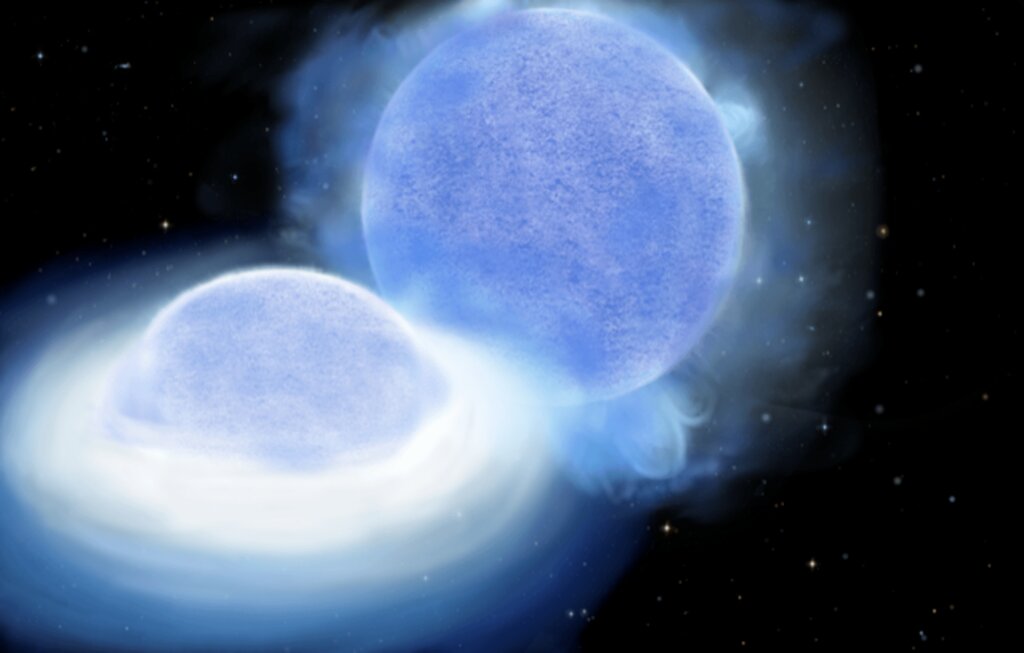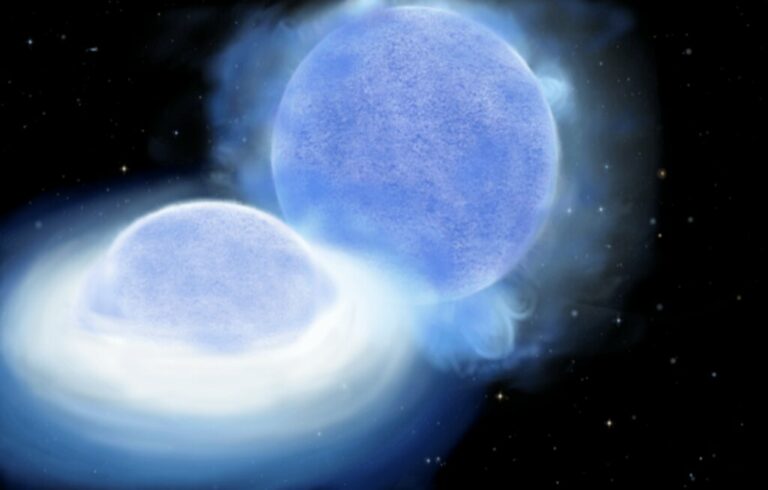A Light Supergiant Unveils a Previously Unidentified Evolutionary Phase
Dr. Varsha Ramachandran and her team of researchers at the Center for Astronomy of Heidelberg University have made a groundbreaking discovery. They have identified the first “stripped” star of intermediate-mass, which fills a crucial gap in our understanding of stellar evolution. These stripped stars have shed most of their outer layers, exposing their dense helium-rich core. This discovery is significant because it provides insights into the formation of heavy elements like silver and gold.
Dr. Ramachandran, a postdoctoral researcher in Dr. Andreas Sander’s research group at ZAH’s Astronomisches Rechen-Institut, led the investigation. The team’s findings have been published in the prestigious journal Astronomy & Astrophysics.
For a long time, scientists have been aware of low-mass stripped stars, known as subdwarfs, as well as their massive counterparts called Wolf-Rayet stars. However, the existence of intermediate-mass stripped stars has remained unconfirmed until now. This discovery challenges our current theoretical understanding and may require a revision of existing models.
The team used high-resolution spectroscopy devices on the Very Large Telescope (VLT) of the European Southern Observatory in Chile to survey hot and luminous stars. They detected peculiar signatures in the spectrum of a previously classified single star. Further analysis revealed that this object is actually a binary system consisting of the intermediate-mass stripped star and a rapidly rotating companion known as a Be star. The Be star had acquired its high rotation rate by accreting matter from the stripped-star progenitor.
This groundbreaking discovery opens up new avenues for research and deepens our understanding of stellar evolution. It highlights the importance of continued exploration and observation in the field of astronomy.

The Small Magellanic Cloud (SMC) is a neighboring dwarf galaxy where the system is located. In this galaxy, the stars have a lower abundance of heavier elements, known as “metals” in astrophysics, compared to the massive stars in our Milky Way. As a result, the metal-poor massive stars in the SMC serve as a glimpse into the past of our own galaxy and the chemical evolution of the universe.
Dr. Ramachandran completed her undergraduate studies in India and then pursued her Ph.D. in Potsdam, Germany. Since September 2021, she has been working at ZAH/ARI. Dr. Ramachandran explains, “Our discovery confirms the existence of the long-missing population of such stars. However, our findings also suggest that they may have a different appearance than what we initially anticipated.” She further explains that instead of completely losing their outer layers, these stars retain a small but significant amount of hydrogen on top of their helium cores, which makes them appear larger and cooler than their actual nature.

Hence, they are referred to as “partially stripped stars.” Dr. Andreas Sander emphasizes that the remaining hydrogen mantle acts as a disguise. “Partially stripped stars closely resemble normal, non-stripped hot stars, effectively concealing their true identity. Only through high-resolution data, meticulous spectral analysis, and detailed computer models can we uncover their true nature.”
It is not surprising that these stars have remained undetected for so long. The research group leader explains, “The key characteristic that gave away this star was its mass: although it may seem substantial to be a few times more massive than our sun, it is remarkably light considering its appearance as a blue supergiant.”
Dr. Jakub Klencki, an independent research fellow at the European Southern Observatory (ESO) and co-author of the corresponding research paper, clarifies that the newly found system acts as the vital connection in the evolutionary chain linking various distinct “species” of extraordinary objects. According to Dr. Klencki, “Based on our stellar evolution models, we anticipate that approximately one million years from now, the stripped star will undergo a supernova explosion known as a stripped-envelope supernova, leaving behind a remnant in the form of a neutron star.”
The recent discovery made by Dr. Ramachandran and her colleagues represents the first instance of a stripped star found in a galaxy with low metal content. If the binary system survives the supernova explosion, the roles of the two stars will reverse. The Be-star companion will then transfer mass to the neutron star accretor, resulting in what is known as a Be X-ray binary.
These captivating systems are believed to be the precursors to double neutron star merger events, which are among the most remarkable cosmic phenomena observed thus far. They are also responsible for the creation of chemical elements like silver or gold. Understanding the process of their formation is a significant challenge in modern astrophysics, and the observation of intermediate evolutionary stages is crucial in achieving this understanding.
Dr. Ramachandran concludes, “Our discovery provides a significant piece of the puzzle, offering the first direct constraints on the progression of mass transfer evolution in such massive star systems.”
This article is republished from PhysORG under a Creative Commons license. Read the original article.
Do not forget to share your opinion with us to provide you with the best posts !




0 Comments